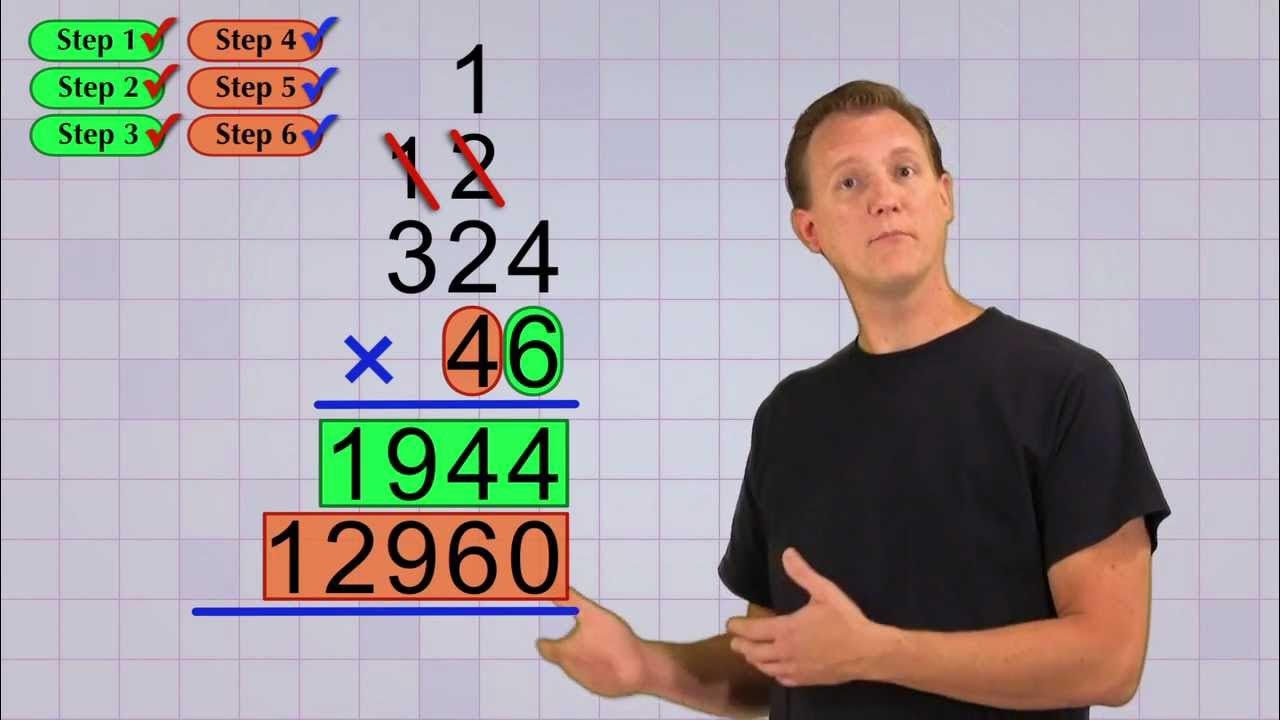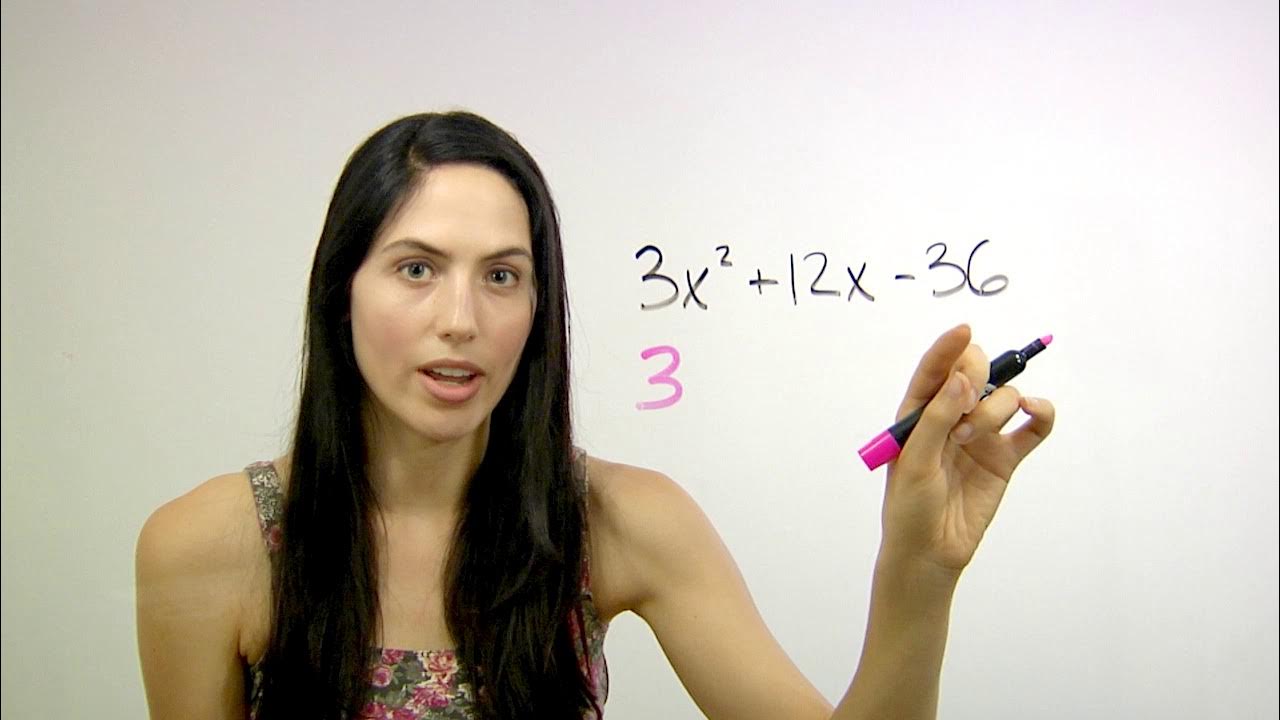How to multiply ANY numbers the fast way - Fast Math Trick
Summary
TLDRThe TechMath channel's video offers an innovative trick for multiplying two three-digit numbers swiftly. The presenter illustrates the method using 213 multiplied by 323, breaking down the process into units, tens, hundreds, and thousands, and explaining the carry-over technique. The method is extended to handle multiplication of numbers of varying lengths, such as two-digit by three-digit numbers, by adjusting the pattern accordingly. The video emphasizes the simplicity and efficiency of this multiplication technique over traditional methods, inviting viewers to practice and compare speeds. The presenter also hints at future videos covering more complex multiplication scenarios and Patreon requests.
Takeaways
- 📚 The video introduces a trick for multiplying two three-digit numbers quickly.
- 🔢 It demonstrates how to multiply 213 by 323 as an example, showing each step of the process.
- 🎯 The trick is not necessarily faster than a calculator but is quicker than traditional multiplication methods.
- 👍 The presenter encourages viewers to like, subscribe, and support patrons.
- 📝 The method involves breaking down the multiplication into units, tens, hundreds, and thousands parts.
- 📈 The video explains how to systematically work out the answer by multiplying corresponding place values.
- 📉 The presenter shows how to carry over numbers when the sum exceeds ten in any place value.
- 📚 The trick is extended to multiplying numbers of different lengths, such as a two-digit by a three-digit number.
- 📝 An example of multiplying 324 by 513 is given to illustrate the process with larger numbers.
- 🔑 The video outlines a pattern for multiplying numbers of varying lengths, such as two-digit by two-digit or three-digit by three-digit.
- 👏 The presenter invites viewers to try the method themselves and provides encouragement and thanks to patrons.
Q & A
What is the main topic of the TechMath channel video?
-The main topic of the video is a trick for multiplying two three-digit numbers together and expanding this method to multiply any two numbers efficiently.
Is the method taught in the video faster than using a calculator?
-The method is not faster than a calculator, but it is claimed to be much faster than the traditional multiplication method that one might have been taught.
What is the first multiplication example given in the video?
-The first example given is multiplying 213 by 323.
How does the video explain the multiplication of the units place in the example 213 multiplied by 323?
-The video explains that you multiply the units digit of both numbers (3 * 3) to get 9, which is the units place in the answer.
What is the final answer for the multiplication of 213 by 323 as shown in the video?
-The final answer for the multiplication is 687,199.
Can the method demonstrated in the video be applied to numbers with more than three digits?
-Yes, the method can be extended to multiply numbers with more than three digits, such as four-digit by four-digit or five-digit numbers.
What is the second multiplication example given in the video?
-The second example given is multiplying 324 by 513.
How does the video handle the multiplication of a two-digit number by a three-digit number?
-The video suggests adding a zero to the end of the two-digit number, effectively converting it into a three-digit number, and then applying the same method used for three-digit multiplication.
What is the final answer for the multiplication of 324 by 513 as shown in the video?
-The final answer for the multiplication is 166,167.
What is the purpose of the pattern shown in the video for multiplying numbers?
-The pattern shown in the video is meant to help systematically work out the multiplication of numbers by breaking it down into units, tens, hundreds, and so on, making it easier to manage and understand.
How does the video conclude the explanation of the multiplication trick?
-The video concludes by summarizing the trick, encouraging viewers to like and comment if they found it useful, and mentioning that the next video will be based on a Patreon request.
Outlines

This section is available to paid users only. Please upgrade to access this part.
Upgrade NowMindmap

This section is available to paid users only. Please upgrade to access this part.
Upgrade NowKeywords

This section is available to paid users only. Please upgrade to access this part.
Upgrade NowHighlights

This section is available to paid users only. Please upgrade to access this part.
Upgrade NowTranscripts

This section is available to paid users only. Please upgrade to access this part.
Upgrade NowBrowse More Related Video

Math Antics - Multi-Digit Multiplication Pt 2

Lagu Nilai Tempat Bilangan @sdbelajar12- Else Puspita

Konversi Bilangan Biner ke Desimal - Cara Cepat dengan Rumus Tabel Konversi

Tutorial Lengkap: Konversi Bilangan Biner, Oktal, Desimal, dan Heksadesimal

How to Multiply

Factoring Quadratics... How? (NancyPi)
5.0 / 5 (0 votes)